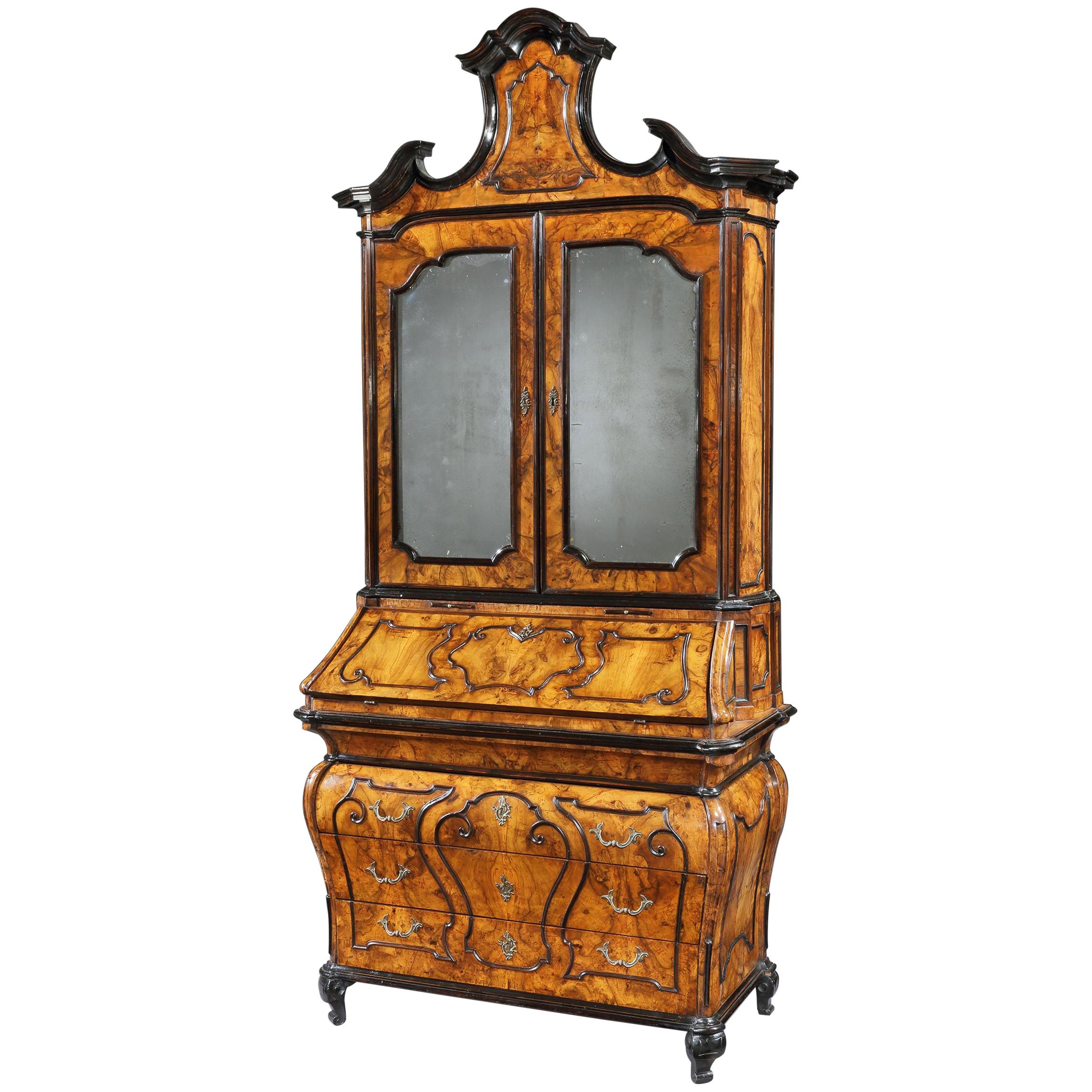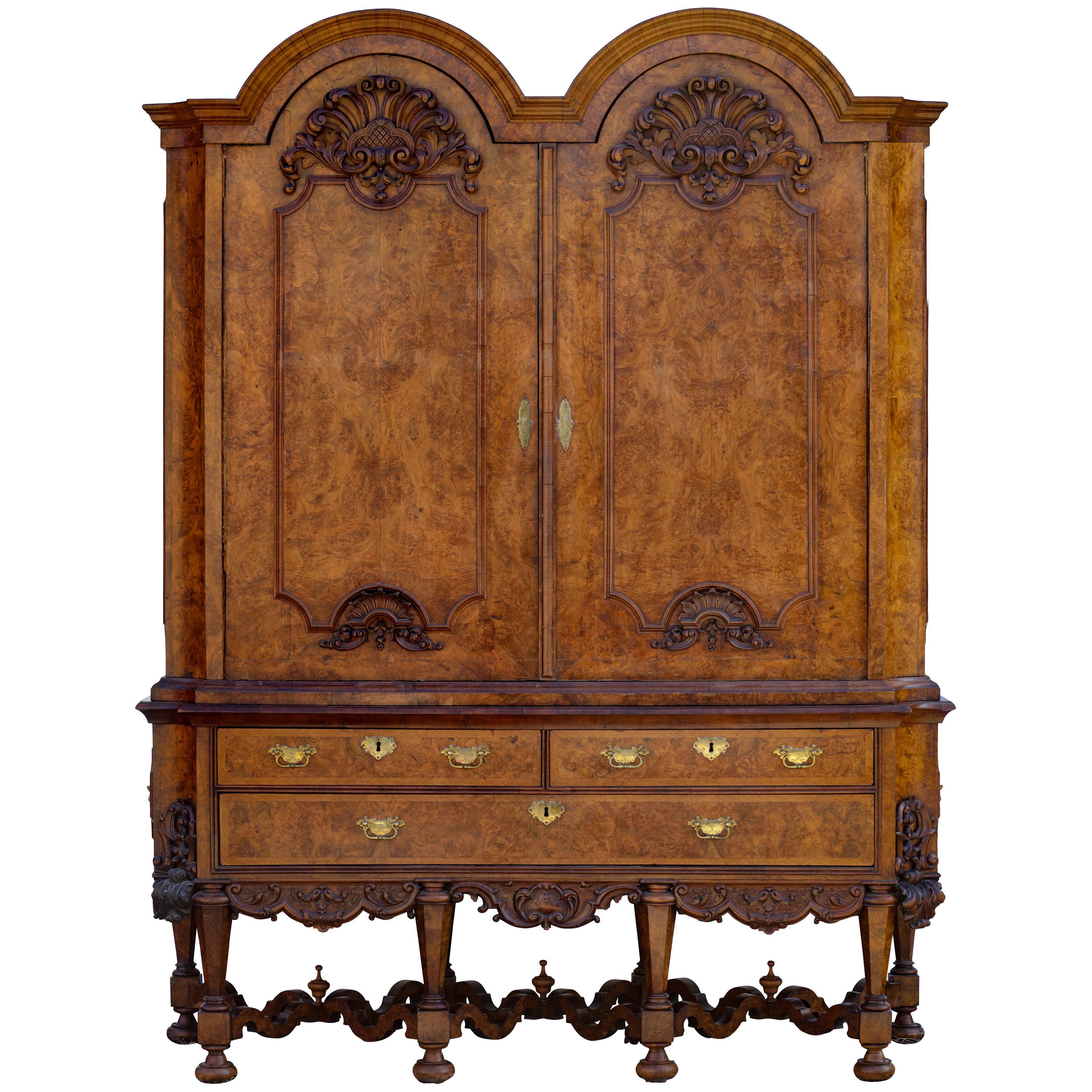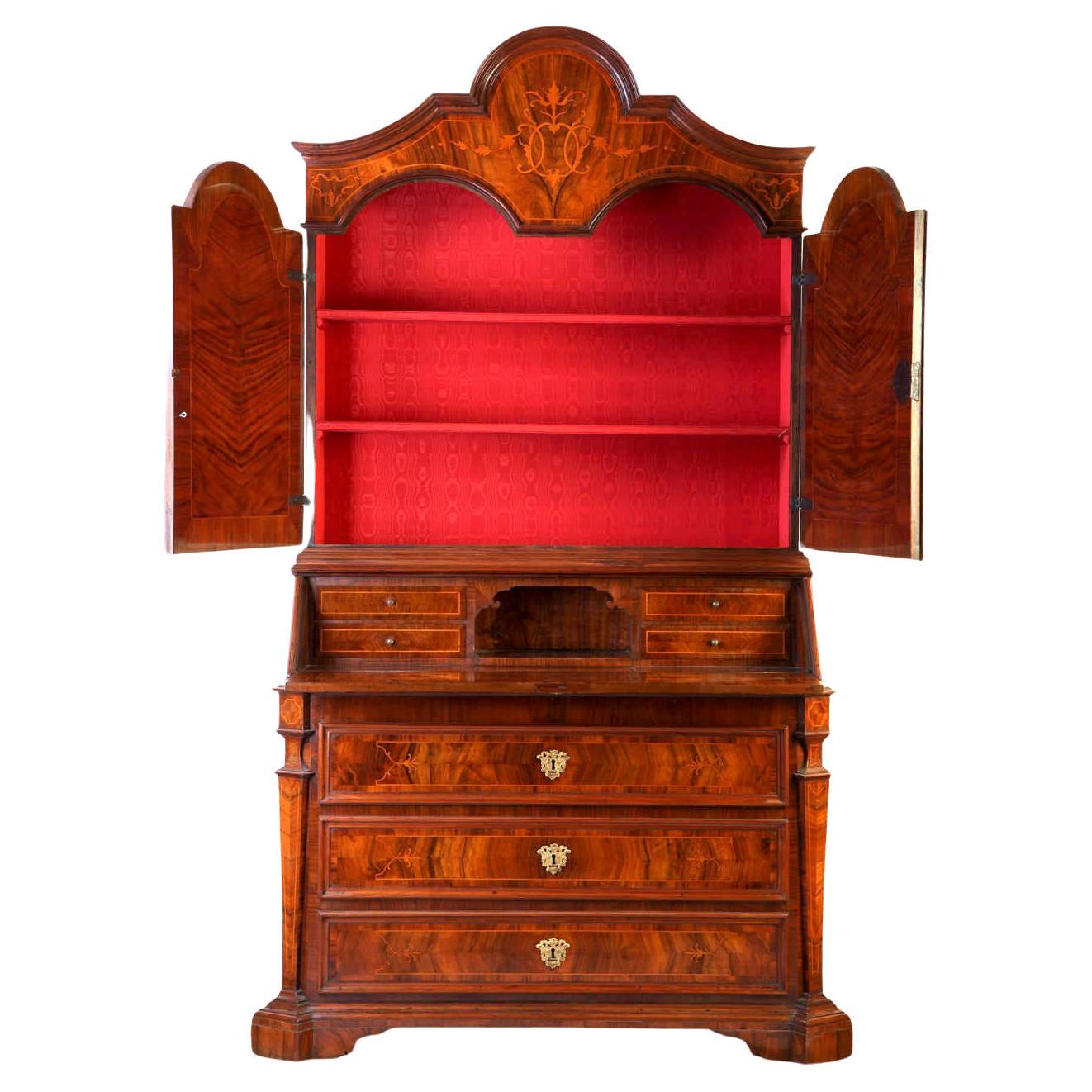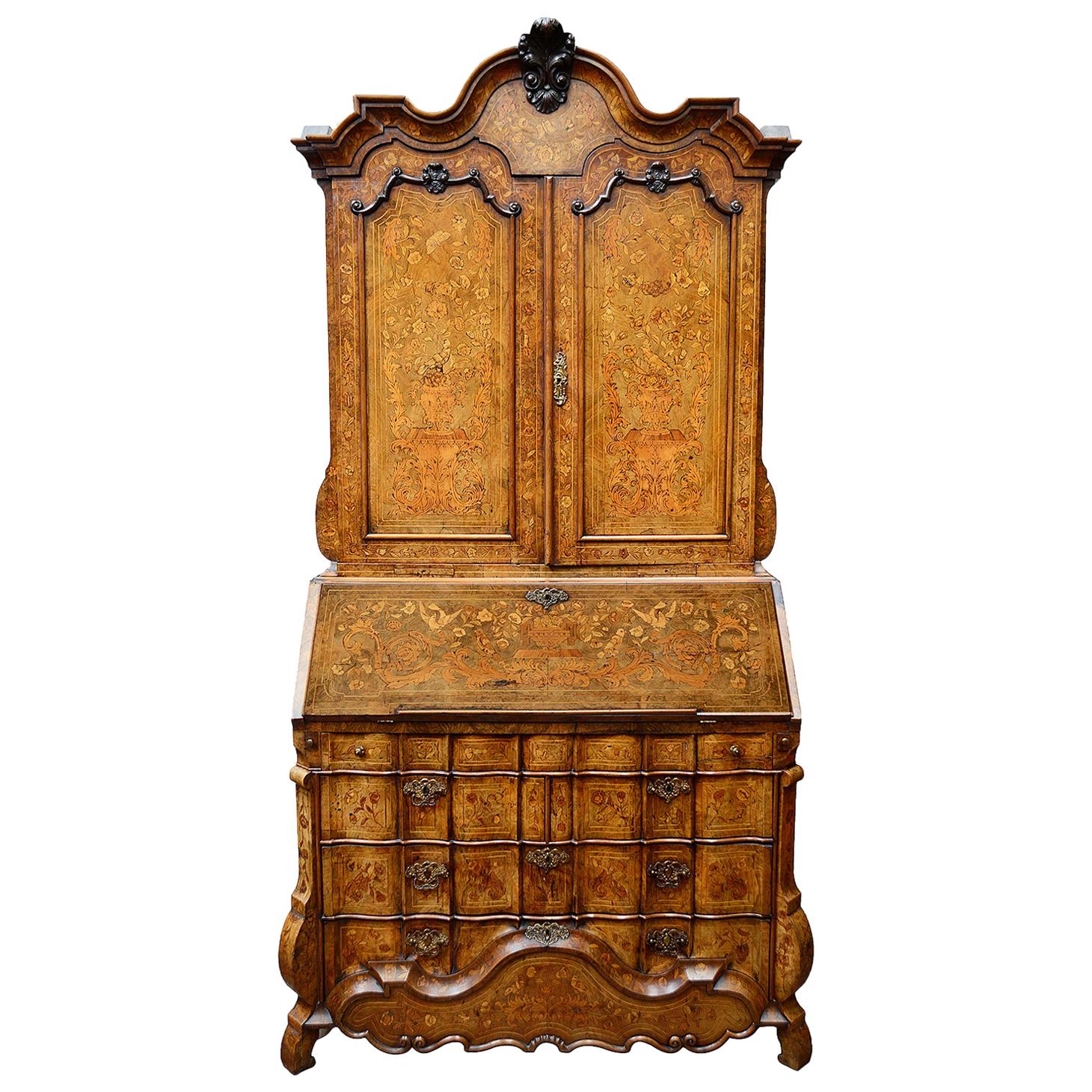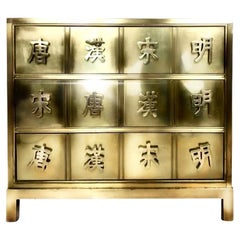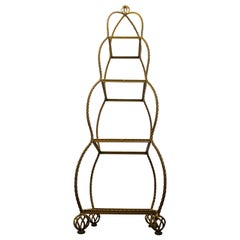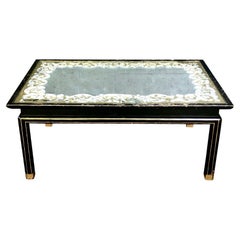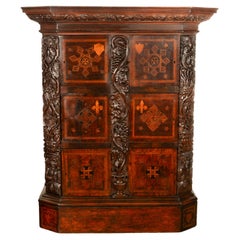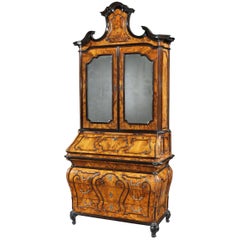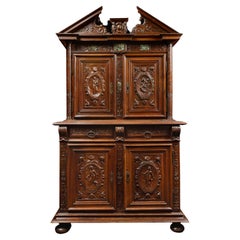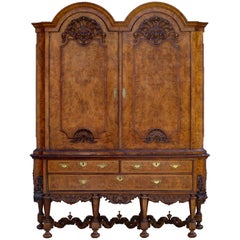Items Similar to Charles II Walnut, Mulberry Marquetry Cabinet, Gilt Stand, 17th C H.F. du Pont
Video Loading
Want more images or videos?
Request additional images or videos from the seller
1 of 10
Charles II Walnut, Mulberry Marquetry Cabinet, Gilt Stand, 17th C H.F. du Pont
$130,480
$186,40030% Off
£97,462.31
£139,231.8830% Off
€112,992.01
€161,417.1530% Off
CA$181,168.22
CA$258,811.7430% Off
A$203,066.25
A$290,094.6430% Off
CHF 105,730.64
CHF 151,043.7730% Off
MX$2,479,525.79
MX$3,542,179.7030% Off
NOK 1,342,394.94
NOK 1,917,707.0630% Off
SEK 1,272,469.67
SEK 1,817,813.8130% Off
DKK 843,042.76
DKK 1,204,346.8030% Off
Shipping
Retrieving quote...The 1stDibs Promise:
Authenticity Guarantee,
Money-Back Guarantee,
24-Hour Cancellation
About the Item
Charles II walnut and mulberry marquetry cabinet on giltwood stand, c. 1650-1670. Giltwood cresting and stand appear to be from a few decades later.
The form of furniture now described as a cabinet developed across Spain and France in the 16th Century. In architecture, a cabinet is a small private room for the housing or display of precious objects, hence the term could be aptly applied to the small, portable pieces of furniture made for the carriage and display of valuable items and able to stand upon a table, trestle stand or chest. Although known in England from Tudor times, cabinets were not widely produced there until after the Restoration of the monarchy in a1660 - cabinets became extremely popular from this period. This cabinet dates from 1660-1670. These cabinets were larger, perhaps up to six foot tall and 3-4 foot wide, some stood on chests while others were mounted on their own stand; the decoration of the stand matching that of the cabinet and of equal quality, reflecting the treasures stored within.
The revolution in the art of veneering also originally came from the Netherlands and increased in popularity with the return of Charles II from The Hague in 1660. Accompanying the king to England were foreign craftsmen, artists, silversmiths, and designers. In 1660, highly trained craftsmen were sent to northern Italy and southern Germany from the Netherlands to teach apprentices new skills in carpentry, joinery and marquetry.
When William of Orange succeeded to the English throne in 1689, the two countries became even more closely connected.
The Dutch had a vast trade with the East and introduced novel materials such as cane and lacquer. Besides panels of lacquer, complete chests called 'lacred tronks' were imported and placed upon custom-made, highly elaborate, occidental stands of gilt, or silvered, finish. Also, sophisticated methods of construction were required to display the increasingly popular Chinese and Japanese porcelains.
This cabinet has a distinguished and documented provenance. It was acquired by Henry Francis du Pont (1880-1969) quite early in his collecting career and would live with him for almost his entire adult life — both at his Park Ave Manhattan apartment and, later, his Winturthur private residence. H.F. Du Pont was an American horticulturist, an expert and collector of European and early American furniture and decorative arts, and member of the prominent du Pont family. In 1951 he established his estate of Winterthur in Delaware as what has been recognized as the premier museum of American Decorative Arts. A passionate collector with virtually unlimited resources, he assembled the more than 89,000 antiques that fill the museum's 175 rooms and framed the mansion with magnificent plantings, including a Quarry Garden, a Sundial Garden, a Pinetum, and an "Enchanted Woods" for children.
Dimensions
43.0" W x 88.0" H x 21.0" D
- measured assembled (the cresting, cabinet, and stand can be separated).
Provenance:
Private collection of H.F. du Pont, New York.
Private collection of H.F. du Pont, Winturthur.
October 1994, Christie’s New York, Fine English and French Furniture of H.F. du Pont from Winterthur (Lot 30).
Literature:
Sweeney, John, The H.F. du Pont House: A Transition, Fine English and French Furniture and Objects of Art from the Private Residence of Henry Francis du Pont at Winterthur, (New York, NY: Christie’s, 1994).
Emily Elizabeth Martin, Emily Elizabeth. “The Mansion House by the Bridge: An Account of the Henry Francis du Pont Cottage at Winterthur.” Graduate School of Clemson University; The Graduate School of College of Charleston, 2009.
- Dimensions:Height: 88 in (223.52 cm)Width: 43 in (109.22 cm)Depth: 21 in (53.34 cm)
- Style:Charles II (Of the Period)
- Materials and Techniques:
- Place of Origin:
- Period:Mid-17th Century
- Date of Manufacture:1650-1675
- Condition:Repaired: Scattered veneer repair and other reinforcements possible. Additions or alterations made to the original: the giltwood cresting and stand appear to be a few decades later. Wear consistent with age and use. Minor losses. Minor fading. Good antique condition, various scratches, marks, cracks, etc consistent with age and use; variable finish wear/losses; scattered veneer distress and light repairs; other light reinforcements possible; missing one drawer handle. Includes keys.
- Seller Location:Brooklyn, NY
- Reference Number:1stDibs: LU4190323025402
About the Seller
5.0
Platinum Seller
Premium sellers with a 4.7+ rating and 24-hour response times
Established in 2017
1stDibs seller since 2018
652 sales on 1stDibs
Typical response time: 1 hour
- ShippingRetrieving quote...Shipping from: Brooklyn, NY
- Return Policy
Authenticity Guarantee
In the unlikely event there’s an issue with an item’s authenticity, contact us within 1 year for a full refund. DetailsMoney-Back Guarantee
If your item is not as described, is damaged in transit, or does not arrive, contact us within 7 days for a full refund. Details24-Hour Cancellation
You have a 24-hour grace period in which to reconsider your purchase, with no questions asked.Vetted Professional Sellers
Our world-class sellers must adhere to strict standards for service and quality, maintaining the integrity of our listings.Price-Match Guarantee
If you find that a seller listed the same item for a lower price elsewhere, we’ll match it.Trusted Global Delivery
Our best-in-class carrier network provides specialized shipping options worldwide, including custom delivery.More From This Seller
View AllMastercraft Dynasty Chest of Drawers, Hollywood Regency Commode Dresser, 1970s
By Mastercraft
Located in Brooklyn, NY
Mastercraft Dynasty Chest of Drawers, Hollywood Regency Commode Dresser, 1970s. Produced by Mastercraft in the 1970's, 3 Drawer Chest of Drawers in Brass, Bronze and Cedar with six c...
Category
Mid-20th Century American Mid-Century Modern Dressers
Materials
Brass, Bronze
$5,180 Sale Price
41% Off
Vintage Baker Furniture Company Magazine Periodical Rack, Brass Casters
By Baker Furniture Company
Located in Brooklyn, NY
Vintage Baker Furniture Company magazine periodical rack, brass casters. Original finish. Labelled. Multiple dividers inside with closed ends. ...
Category
Mid-20th Century American Mid-Century Modern Magazine Racks and Stands
Materials
Wood
$231 Sale Price
87% Off
Vintage Brass Faux Bois Étagère Shelf, Trompe L’oeil Shelves
By Mastercraft
Located in Brooklyn, NY
Vintage Brass Faux Bois Étagère Shelf, Trompe L’oeil Shelves. Regency gilt iron shelves. Frame only. Gorgeous display piece.
Category
Mid-20th Century American Hollywood Regency Shelves
Materials
Brass
$945 Sale Price
30% Off
Baker Furniture Verre Églomisé Gilt Ebonized Antique Coffee Table, Labelled
By Baker Furniture Company
Located in Brooklyn, NY
Baker Furniture Verre églomisé gilt ebonized antique coffee table, labelled. Baker marking dates to 1940 according to my research. Extremely rare piece.
Category
Mid-20th Century American French Provincial Coffee and Cocktail Tables
Materials
Glass, Wood
$1,260 Sale Price
55% Off
French Provincial Custom Green Grange Triangular Table, Corner Console, France
By Grange
Located in Brooklyn, NY
French provincial custom green grange triangular table, corner console, France. French corner table painted green with gold leaf striping, tapered...
Category
Late 20th Century French French Provincial Side Tables
Materials
Wood
$1,729 Sale Price
62% Off
Marbro Oxblood Elephant-handled Chinese Urn Table Lamp Sangre de Boeuf Regency
By The Marbro Lamp Company
Located in Brooklyn, NY
The Marbro company was founded by Morris Markoff and his brother, hence the name "Marbro" from Markoff brothers. They started the company shortly after WWII. The company was located in a 3 story brick building in the garment district of Los Angeles, just south of Downtown right by the Santa Monica Freeway. During the time they ran the company, they sold almost as many antiques as they did lamps.
Marbro sold their products mainly through interior designers and a few upscale furniture stores. Most of the products were built to order. A typical order from a designer or retailer took between 75 and 90 days to complete.
Most of the components that made up the lamp bodies (ceramic, brass, glass, etc) were purchased from small companies and antique dealers around the world. For the most part, none of the bodies were made on site. . Italy was the source for alabaster, Japan and China for Porcelain, Brass in India and Crystal from Germany and France. Lamps would also be made from sculptures that customers brought to in to the shop.
Once the lamp bodies arrived, a group of Marbro employees would make the wood bases, spin the metal caps, make the shades, and do the painting and tinting. With the help of about 20-40 other true world class artisans, metal workers, finishers and handmade shade makers, they produced lamps and shades that were truly some of last of their kind of art.
Here we have an astonishing example of Marbro production. This mid to late 18th century lusciously oxblood lacquered "sang de boeuf" Chinese urn was almost certainly a custom commission by a client, the owner of the Qing urn. The exceptional quality of the urn, it's size, gentle proportions, the even application of the oxblood glaze (especially over the stunning elephant handles) are of a quality that I have not seen before in a lamp.
The Marbro artisans truly did right by their client, as they allowed the exceptional form and color of the Chinese antique take center stage. The simple base follows the proportion of the body yet perfectly echoes the angle and curve of the elephant trunk handles.
Victorian lampshade...
Category
Antique Late 18th Century Chinese Qing Table Lamps
Materials
Porcelain
$5,190 Sale Price
40% Off
You May Also Like
Antique Flemish / Dutch Walnut Marquetry Royal Manuscript Cabinet, circa 1680
Located in Portland, OR
Antique Flemish / Dutch walnut marquetry Royal Manuscript cabinet, circa 1680. The cabinet possessing a stepped cornice with a carved frieze of frui...
Category
Antique Late 17th Century Dutch Baroque Cabinets
Materials
Walnut
18th Century Italian Walnut Lombardy Bureau Cabinet
Located in London, GB
A good Lombardy Bureau cabinet of the 18th century
Constructed in a well patinated walnut; rising from scrolled feet, supporting a bombe form base with three inset shaped long dr...
Category
Antique Mid-18th Century Italian Cabinets
Materials
Mirror, Walnut, Wood
16th Century French Walnut Cabinet with Marble Inlays
Located in Saint-Ouen, FR
On the left post of the lower body, is written the date 1596 in a cartouche
This cabinet has two bodies. The upper part, set back, is moulded and carved. At the bottom, the cabine...
Category
Antique 16th Century French Renaissance Cabinets
Materials
Walnut
Magificent Dutch 'Daniel Marot' Baroque Walnut Burr Cabinet on Stand, circa 1720
By Daniel Marot
Located in Amsterdam, NL
The Marot cabinet
A Magnificent Walnut Burr Cabinet on stand or 'kruisvoetkabinet' in the style of Daniel Marot
Circa 1720, probably made for George Clifford III in Amsterdam or the Hague
The cabinet is one of the rarest examples of a so-called Kruisvoetkabinet, which is translated to Cabinet on stand. The cabinet is raised on a stand with eight legs and tree drawers. Below the drawers and on the sides are five carved ornaments. The hollow formed corners are mounted with carved ornaments too. The upper part of the cabinet has two doors decorated with panels and on each door two carved ornaments in Marot style. The cabinet has a double dome top.The interior of the cabinet has tree shelves and five drawers. The brass fittings and handles are original and finished with gilt lacquer. The cabinet is made of oak and veneered with burr walnut. The carvings, turned parts and the ball feet are made of solid walnut.
This cabinet is a unique piece of Dutch furniture. Cabinets on stand became popular in the third quarter of the 17th century and were made until the second quarter of the 18th century. Most of the dutch cabinets on stand...
Category
Antique Early 18th Century Dutch Louis XIV Cabinets
Materials
Oak, Walnut
$94,311
Free Shipping
18th Century Italian Walnut Parquetry Important Bureau Cabinet Trumeaux
Located in Rome, IT
An Italian walnut, parquetry bureau cabinet fruitwood inlaid with scrolling foliage,
The upper section with a shaped carved cresting, a shaped doors opening to reveal three shelves, ...
Category
Antique Early 18th Century Italian Baroque Secretaires
Materials
Wood
$52,862 Sale Price
20% Off
18th Century Dutch Marquetry Bureau Bookcase
Located in Brighton, Sussex
A very imposing good quality 18th century Dutch Marquetry bureau bookcase, having wonderful flowers, birds, classical scull and urn decoration. ...
Category
Antique 18th Century Dutch Desks
Materials
Walnut
More Ways To Browse
Train Case
Custom Walnut Cabinet
Antique French Marquetry Cabinet
Museum Display Stand
Plant Cabinet
Collectors Display Cabinet
Walnut Display Stand
Gilt Display Cabinet
Matching Antique Cabinets
Train Cabinets
German Display Case
Lacquer Cabinet On Stand
Antique New England Cabinet
Antique Silver Storage Cabinet
17th Century American Furniture
Italian Marquetry Cabinet
Marquetry Display Cabinet
Museum Display Case

